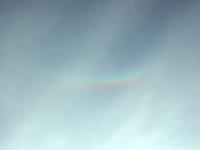Twenty years ago today, a nuclear reactor in Chernobyl, USSR (now Ukraine), exploded and released 100 times the radiation of the Hiroshima and Nagasaki atomic bombs (source). I was ten years old at the time, and I remember that when the news about the atomic catastrophe finally reached Germany, we were not allowed to play outside in the sand, on the playground, or in the rain. Of course I was too young to understand what had happened, but I was scared.
Twenty years later, I do understand how atomic plants work and how the accident in Chernobyl happened, but it’s still hard to grasp the sheer enormity of the consequences.
Pripyat is a town close to Chernobyl which housed many of the workers at the atomic plant. It has been abandoned after the accident. Pripyat and the 30k zone is David McMillan’s colletion of photos he took in Pripyat in 1994 and 2004.
You may remember Elena Filatova who gained fame about two years ago for publishing photos from her trip to Pripyat on her website. She has also published a short film called Ghost Town (54 MB quicktime film) which has some footage from the evacuation of Pripyat twenty years ago.
Spiegel online has an article on Chernobyl in its English section: Chernobyl’s Aftermath: The Pompeii of the Nuclear Age, including a photo gallery on the aftermath of the disaster.
Twenty years are not a long time when it comes to some radioactive nuclides: for example, uranium 238 has a half life of 4.5 billion years. Two of the radionuclides emitted in Chernobyl are caesium 137 with a half life of about 30 years and iodine 131 with a half life of eight days (Halbwertszeiten). The latter is accumulated in the thyroid of humans, which can lead to cancer. The Chernobyl Children’s Project International tries to help the people of Chernobyl and the surrounding towns in many ways.
Nuclear nightmares is a collection of photographs by Robert Knoth (reporting by Antoinette de Jong). The photos show people who live around Chernobyl, but be aware that some of the pictures are really disturbing. (Link via MetaFilter.)
Das Physik-Journal widmet dem Tschernobyl-Unglück einen großen Teil der aktuellen Ausgabe. Eine Online Registrierung ist kostenlos, oder man kann die Artikel als PDF herunterladen: 20 Jahre Tschernobyl, Der Unfall – Hergang und Erklärungen, Die Wege der Radionuklide, Die gesundheitlichen Auswirkungen.
Die Zeit: Atomkraft: Es gibt ein Leben nach Tschernobyl. “Zuerst kehrten die Alten zurück, denen Heimat mehr bedeutete als Radioaktivität. Zwanzig Jahre nach der Reaktorkatastrophe haben sich die Menschen der Region mit der Strahlung trotzig arrangiert”. Von Hans Schuh.
Kernenergie: Von der Angst verstrahlt. “Das Unglück von Tschernobyl hatte viele Konsequenzen – leider auch die falschen”. Von Gero von Randow.
Spiegel online: Strahlenopfer: Wie deutsche Ärzte Tschernobyl-Kindern helfen (inklusive Fotostrecke).

